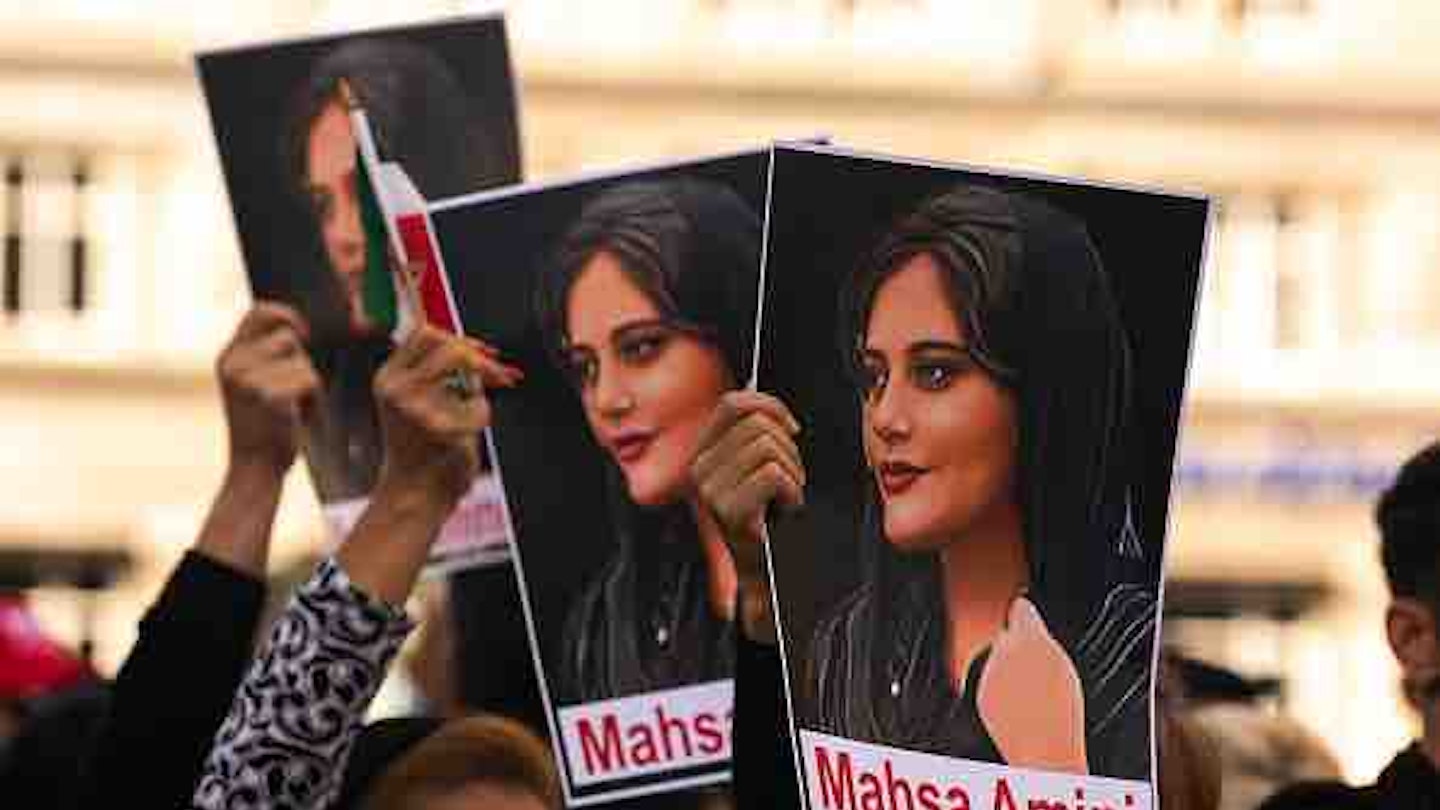On 16 September, Mahsa Amini,a 22-year-old Kurdish Iranian woman living in Iran, died in the custody of the regime’s so-called 'morality police'. Never was an organisation so utterly incorrectly named. The men and women of this branch of the police harass women who are wearing ‘incorrect hijab’ (headscarf ). If their fringe is peeking out, the police will shriek at them to cover up. They appear at public places – train stations, parks, bus stops, shopping centres – and identify women they consider to be improperly dressed. They are known to hit, kick and verbally abuse women who resist their rules.
Beautiful, vibrant Mahsa’s ‘crime’ was that her hair was visible when she was arrested while shopping in Tehran. The police thugs reportedly beat her so badly they put her in a coma, then claimed she’d had ‘an underlying heart condition’ – something her family denies. Her death, just three days after she was arrested, has sparked uproar from men and women in Iran who, despite having their internet shut down by the ruling Islamic Republic, have taken part in mass protests across 31 provinces.
I have not seen scenes like this in the country since the Iranian revolution of 1979, when the people wanted the undemocratic Shah out, and Ayatollah Khomeini took over. He imprisoned and killed anyone who criticised his strict religious regime. He targeted my father, a writer, and so we were exiled to the UK.
It’s hard to explain to people who are not familiar with Iranian history how different its diverse, ancient and vibrant culture is to the ultra-conservative rules its people have had to live by since the clerics’ regime took over. Iranian women had never been made to wear a hijab before. I have photos of my mum and dad on a beach in Iran in the ’70s, both in swimming costumes. My mother and her friends wore miniskirts at university and piled their hair into glamorous beehives.
Iran's history is rich with poetry and literature and a million miles from the joyless face of the current administration.
Of course there were religious people, but the society they lived in was liberal, secular. Iranians are a gregarious people, expressive, innately hospitable and deeply connected to our history, which is rich with poetry and literature and a million miles from the joyless face of the administration. Overnight, this new regime crushed women’s rights. Singing, dancing, parties and make-up were banned. Laws were introduced that stripped divorced women of rights to their children. Now, if a woman divorces, her husband gets custody of the children, no matter what. If he dies, his family gets custody. And the regime’s obsessive demand that women’s hair be covered means those who don’t comply are flogged or imprisoned.
Opposition has been ruthlessly suppressed: protests against the forced hijab, in particular, have been going on for some time, hotting up in recent years. In response, Ayatollah Ali Khamenei, the current leader of Iran’s government, declared in 2020 that ‘improperly’ covered women should be made to feel ‘unsafe’, empowering those who were merciless towards Mahsa.
Now, with enormous, relentless bravery, the youth of Iran have risen up, leading a movement that has swept through the generations. I saw one video shared online of a young woman quickly sorting out her ponytail before rushing towards a demonstration, knowing the authorities are shooting, knowing the body count is rising. At least 41 people are reported to have been killed, according to Reuters, but the true death toll is believed to be higher.
'There are teenagers out there, it's like war here.'
‘They are so young,’ my cousin, in the Iranian city Amol, told me. She had sat up all night, constantly trying to get online whenever internet service briefly resumed and, in the minutes she could, sent me voice notes describing the scenes of protest she could see. ‘There are teenagers out there: 14- and 15-year-olds. It’s like a war here.’
As I write, I haven’t been able to get messages to or from my relatives in Iran for a couple of days now. I am asked what the UK and the international community can do to help Iranians who are fighting for the freedom to feel the breeze in their hair. To which I say: be their voice. Follow the protests, share the pictures and videos, put pressure on our government and others to send a robust message to the Iranian regime that they condemn their actions.
I got out. I was lucky. I have had freedom in the UK that my brothers and sisters in Iran are fighting to achieve for each other. They need the international community to support them. Don’t look away.
READ MORE: ‘My Dad Should Have Come Home With Nazanin – The British Government Have Left Him Behind’
